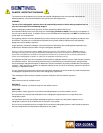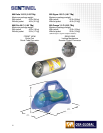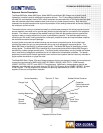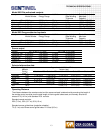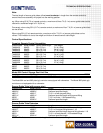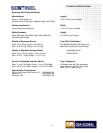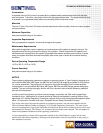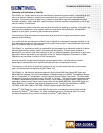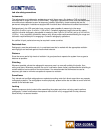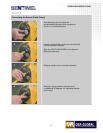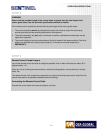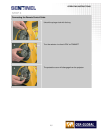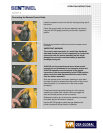
TECHNICAL SPECIFICATIONS
1.6
Construction
A depleted Uranium (DU) shield is encased within a welded tubular stainless steel shell with stainless
steel end plates. The interior void space is filled with rigid polyurethane foam. The exposure device body
is encased in an engineered plastic jacket also consisting of the handle and a base.
Materials
Titanium ‘S’ tube, DU shield, 300 series stainless steel tubular shell and plate, aluminum, brass, tungsten
and polyurethane.
Maximum Capacities
See previous table listings in this section.
Inspection Requirements
Daily pre-operational inspection for obvious damage to the system.
Maintenance Requirements
Most national regulations require inspection and maintenance of the system at quarterly intervals. The
complete annual servicing ensures the integrity of the system. Shorter frequencies of inspection and
maintenance are required when the system is operated under severe operating environments. In some
cases, the system should be serviced immediately after certain jobs in severe environmental working
conditions.
Device Operating Temperature Range
-40°F to 300°F (-40°C to 149°C)
Source Assembly
See previous table listings in this section.
NOTICE
These industrial radiography systems are used as an exposure device, a Type A shipping container and
for the Models 880 Delta, 880 Sigma and 880 Elite as Type B(U)-96 shipping containers for QSA Global,
Inc. source assemblies. The purpose of this manual is to provide information that will assist qualified
radiographers in using the Model 880 Delta, 880 Sigma, 880 Elite and 880 Omega gamma radiography
systems. The user must be thoroughly familiar with this instruction manual before attempting operation
and use of this equipment.
In order to use this equipment or perform source changes, users within the USA must be specifically
licensed to do so. Applications for a license should be filed with the Materials Licensing Section of the
appropriate U.S. Nuclear Regulatory Commission regional office or with the appropriate Agreement State
office. All users within Canada must have a Canadian Nuclear Safety Commission license.
Prior to the initial use of the exposure device as a shipping container, the user must register with the
Office of Nuclear Material Safety and Security, U.S. Nuclear Regulatory Commission. The user should
have in his possession a copy of the Certificate of Compliance issued for the exposure device, which may
be obtained from Sentinel, QSA Global, Inc. customer service centers upon request. This also applies to
users from Agreement States and other regulatory jurisdictions.
It is the responsibility of users of this equipment outside of the United States to comply with all local,
national and international regulatory, licensing and transportation rules and regulations as they apply in
their respective countries.



